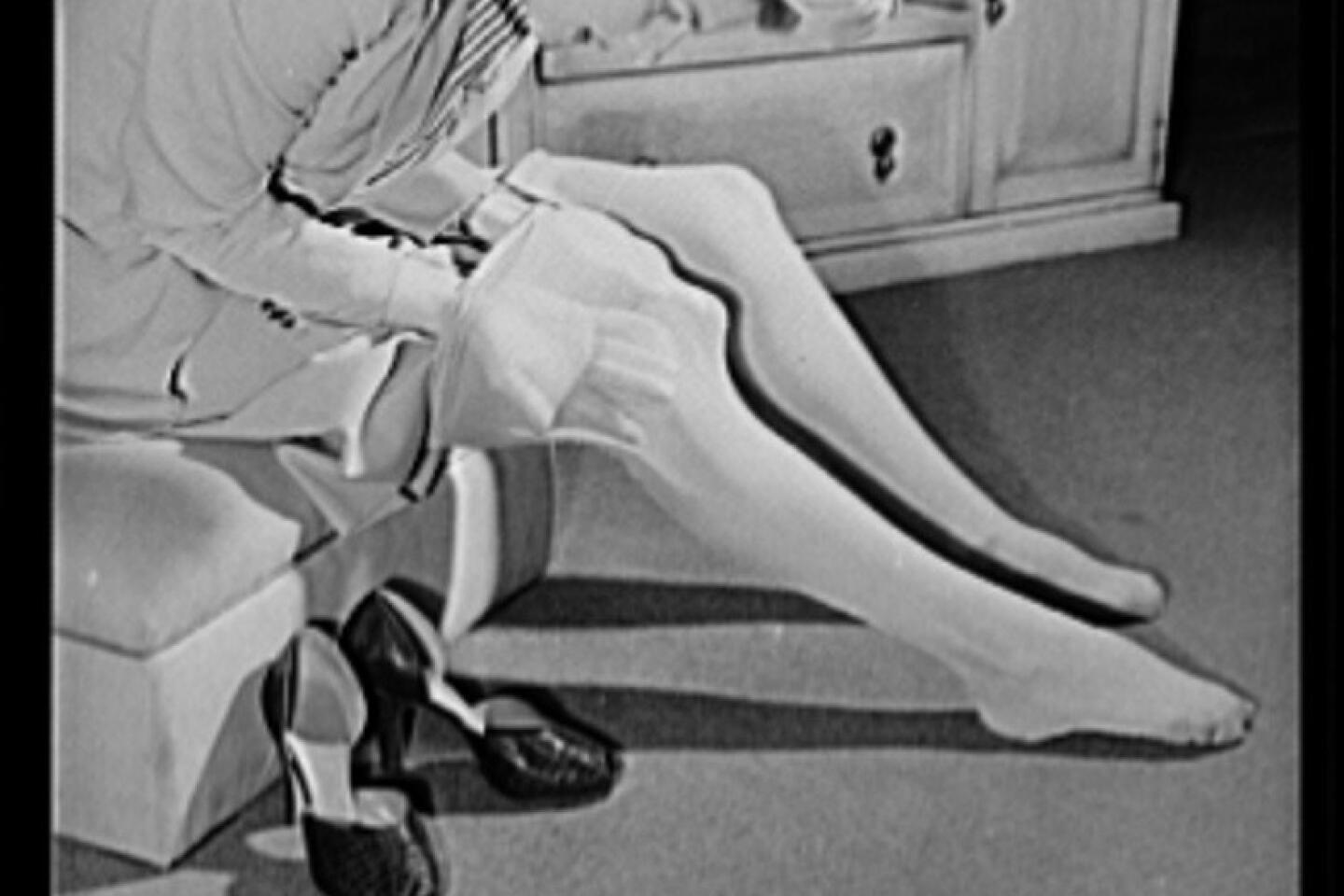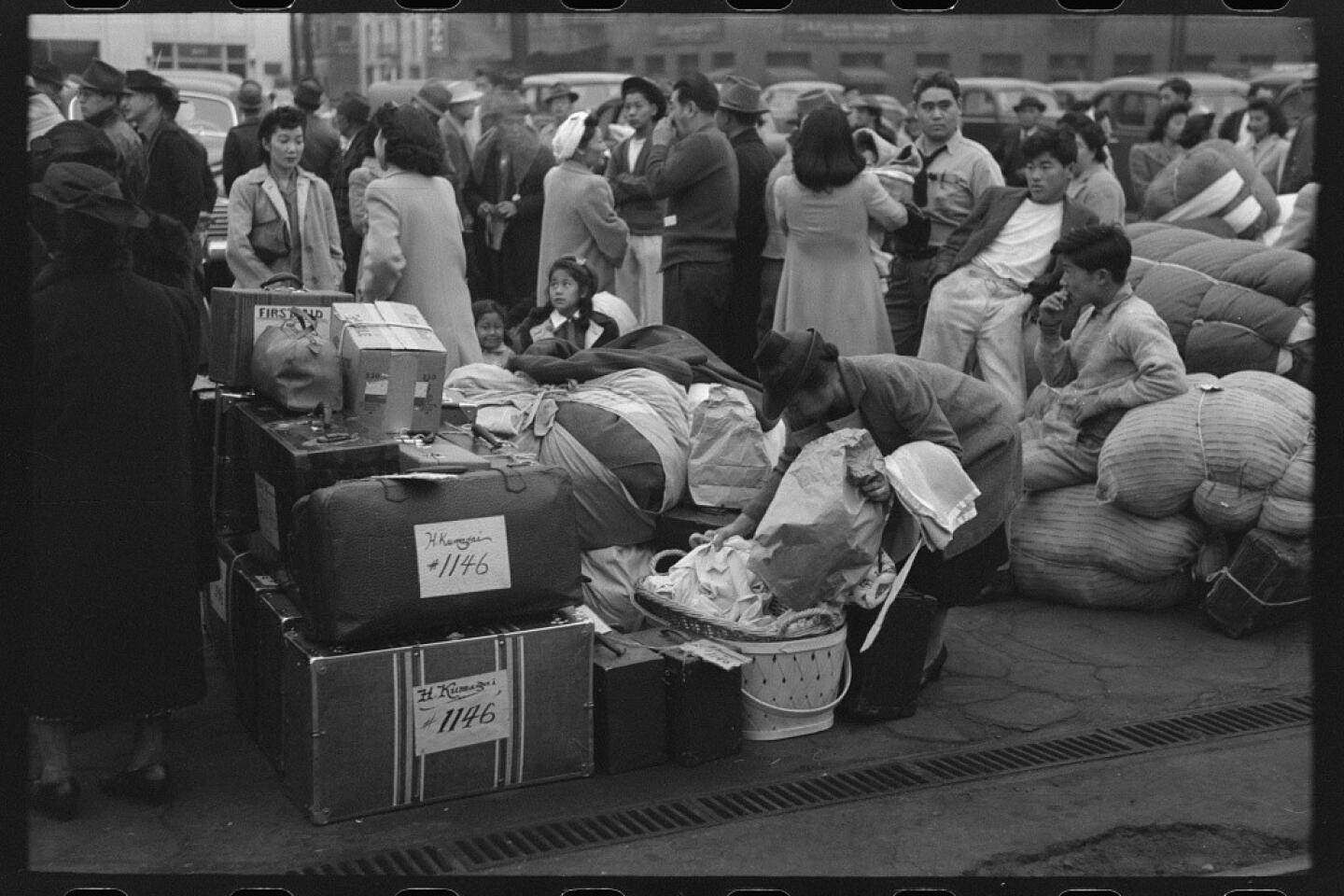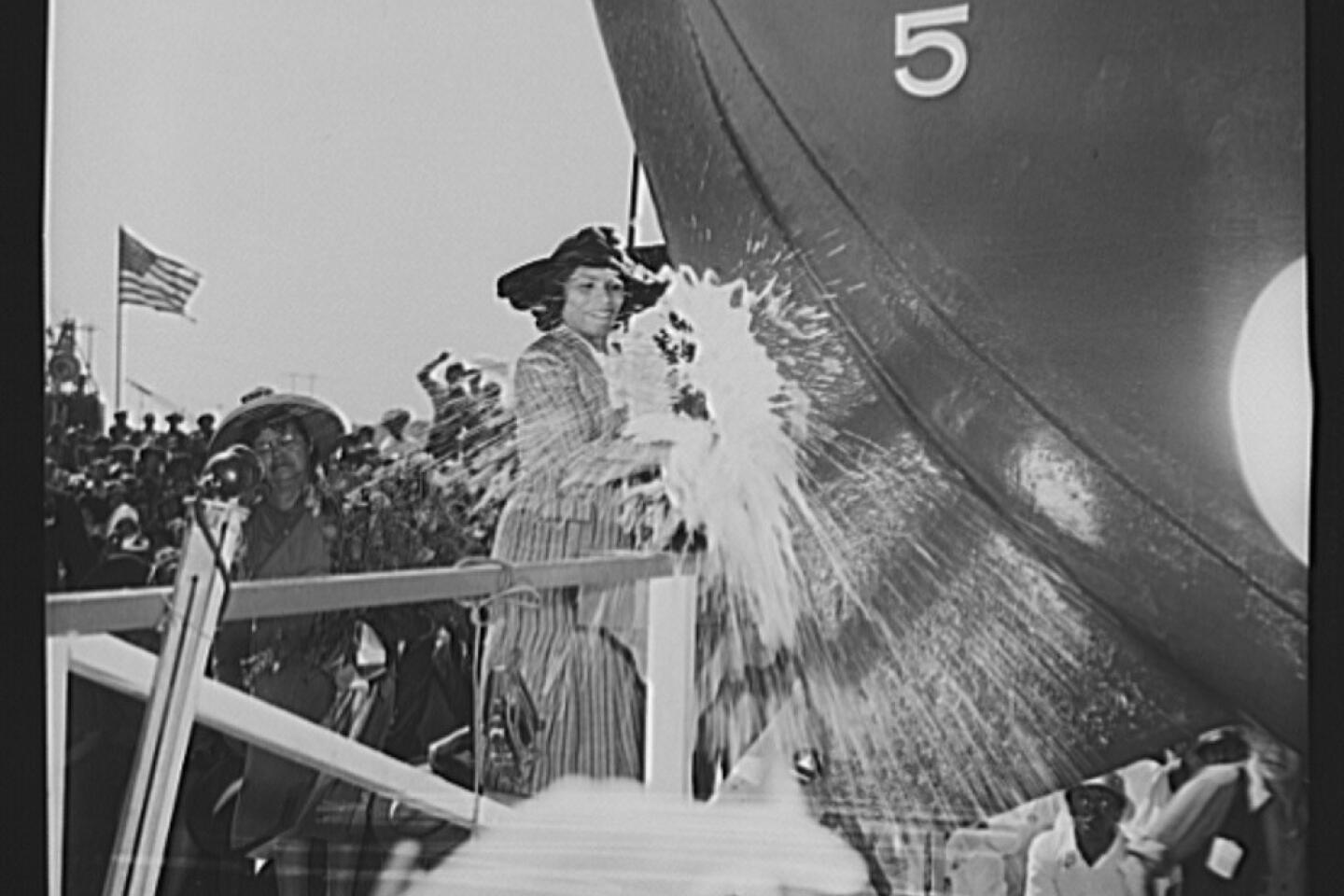Opinion: The past makes a comeback -- in searchable words and pictures
- Share via
Newspapers -- both in print and online -- are by definition and inclination intensely focused on the present, though a lot of us practitioners also have a penchant for the past. So I’ve been idling around a couple of sites that together offer a remarkable gateway to crucial journalistic records of the nation’s history.
The first is a new site hosted by Yale University that has sorted 170,000 Depression-era photos taken under the auspices of the Farm Security Administration and the Office of War Information -- best-known to Californians as the project that sent Dorothea Lange into the Central Valley. The photos are held by the Library of Congress, but the Yale Photogrammar site lets you search and download copies, nearly all of which are in the public domain (no copyright concerns).
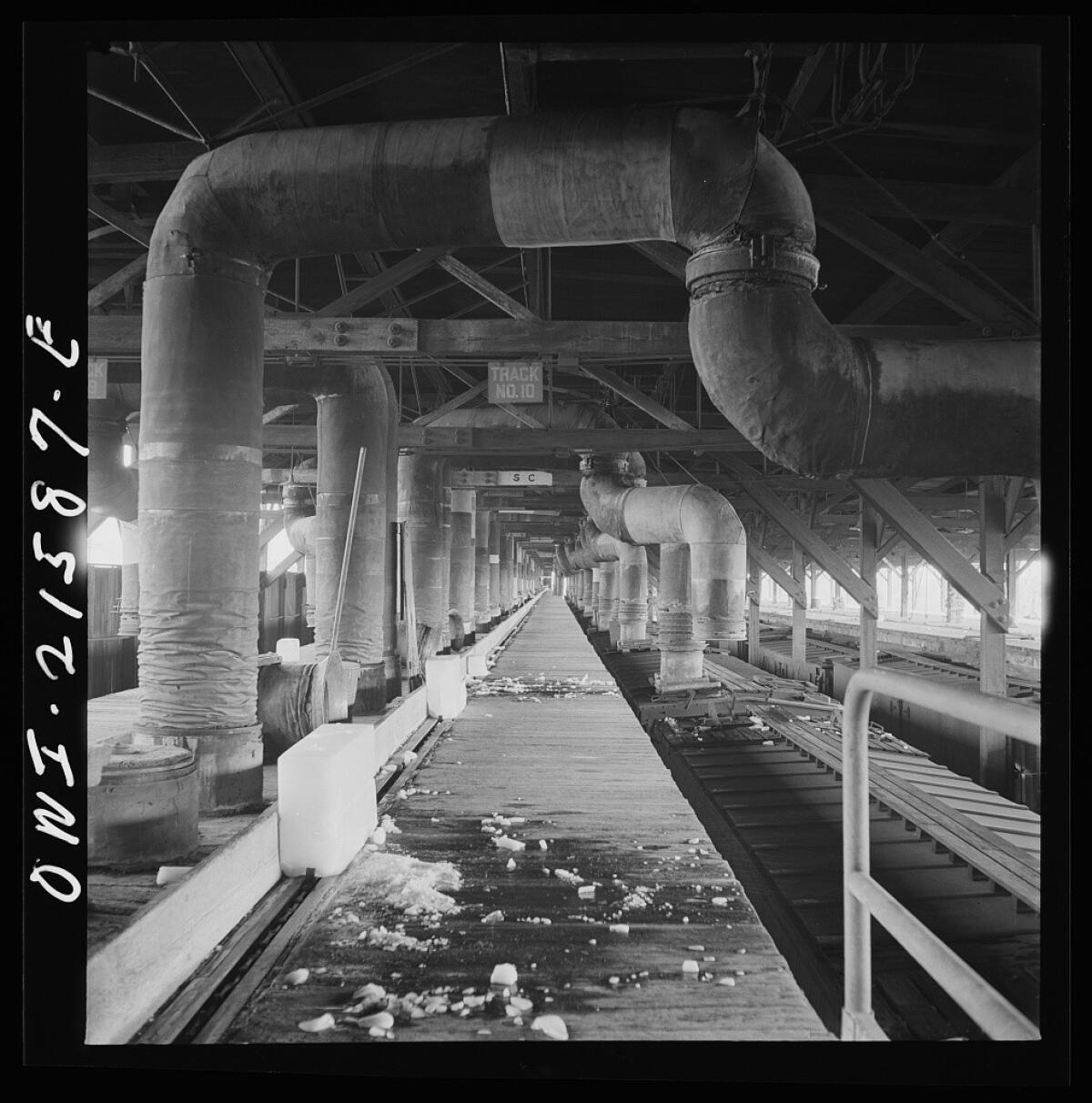
Railroad refrigerator cars, lower right, are precooled at a San Bernardino ice plant prior to loading with perishable goods grown in Southern California. Twenty-degree air is blown through the cars before they are packed with ice and the goods to be shipped.
This is where it’s most useful: Photogrammar has interactive maps by county and by photographer. There are some 1,300 photos from Los Angeles County covering 1935 to through 1943, touching on issues light -- cotton stockings for women replacing silk commandeered for the war effort -- and dark -- Japanese Americans loading onto trains as they were forcibly relocated to internment camps. There are also photographs of Dust Bowl refugees, Los Angeles streetscapes, women aircraft workers, airing of the radio program “Three Thirds of a Nation,” and other slices of life.
Small moments, those, but such minutiae make up much of individual lives. And it’s fascinating to trace the arc back decades, distilling context for how we live today.
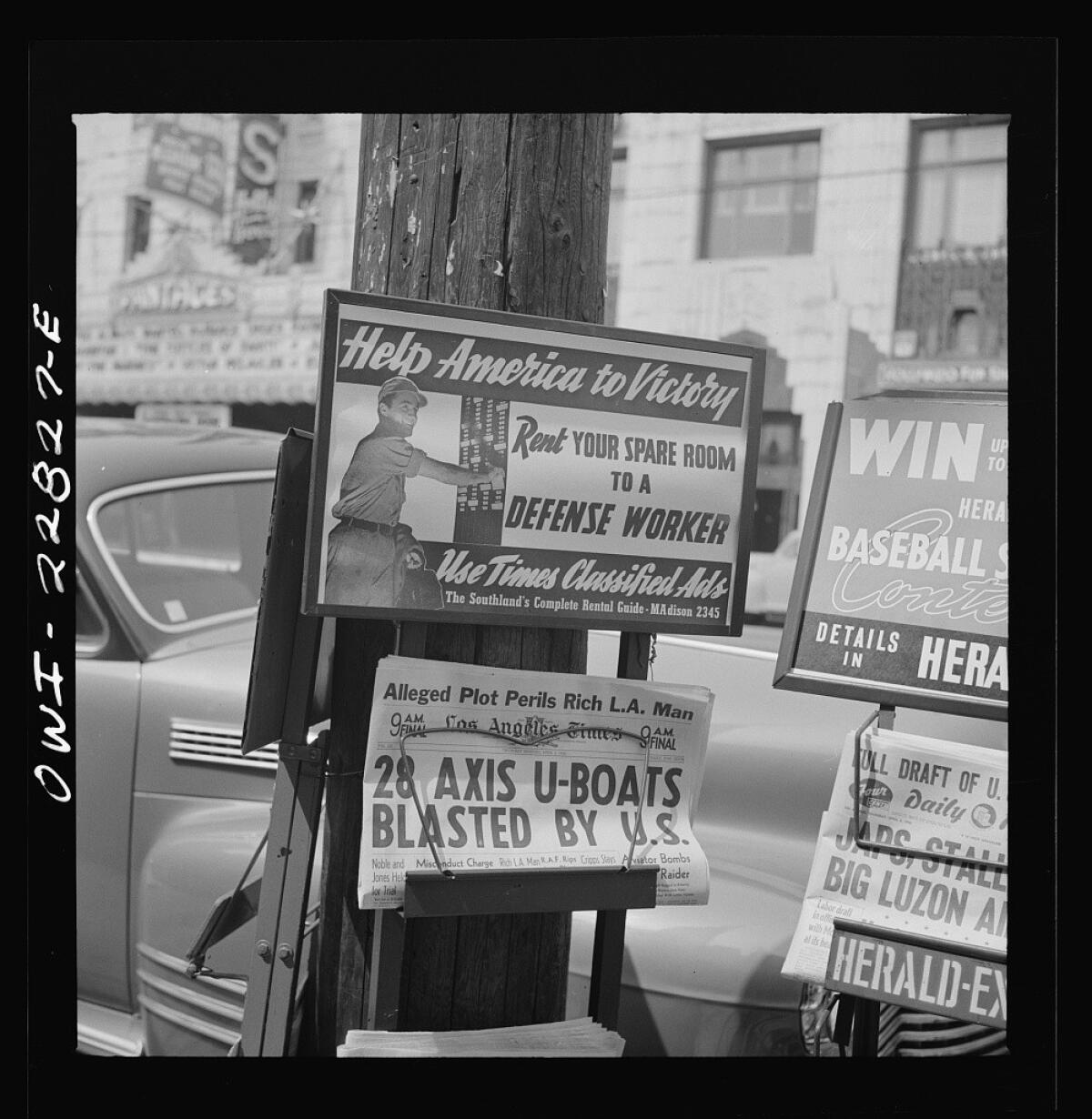
A street-corner newsstand in Los Angeles, bringing the daily news of the war in April 1942.
More interesting, though, is the interactive map that tracks photographers by geography. Lange was among the most famous of the photographers, but she was far from the only one. Russian-born Jack Delano, who later in life was a Puerto Rico-based composer, took thousands of photos up and down the Eastern Seaboard, each site depicted by a dot on the map. But there’s also an intriguing line of dots tracing Delano’s March 1943 train trip from Chicago to Los Angeles, during which he took hundreds of pictures.

Japanese Americans wait with their luggage at the Santa Fe rail station in Los Angeles for trains that will take them to an internment camp in the Owens Valley.
Where Photogrammar focuses on a fairly narrow window of time, a joint site by the Library of Congress and the National Endowment for the Humanities called Chronicling America goes further back into the nation’s history. It is a searchable database of newspapers, mostly from small towns and cities, published in the U.S. from 1836 to 1922. And this week the site scanned in its 10 millionth newspaper page.

A plant quarantine inspector examines a plane at the Glendale Airport in 1937.
The Times is not included in the database, but the Los Angeles Herald is, as are papers from San Francisco, Sacramento, Imperial Valley and elsewhere. As of this morning it contained 1,892 different newspapers, some full runs, others limited to specific years. The San Francisco Call editions of April 19 and April 20, 1906, are missing -- presumably the newspaper couldn’t publish in the midst of the fires sparked by the April 18, 1906, earthquake. But it shows up on April 21 with the screaming headline, “Waterfront Burns Almost to the Ferry.”
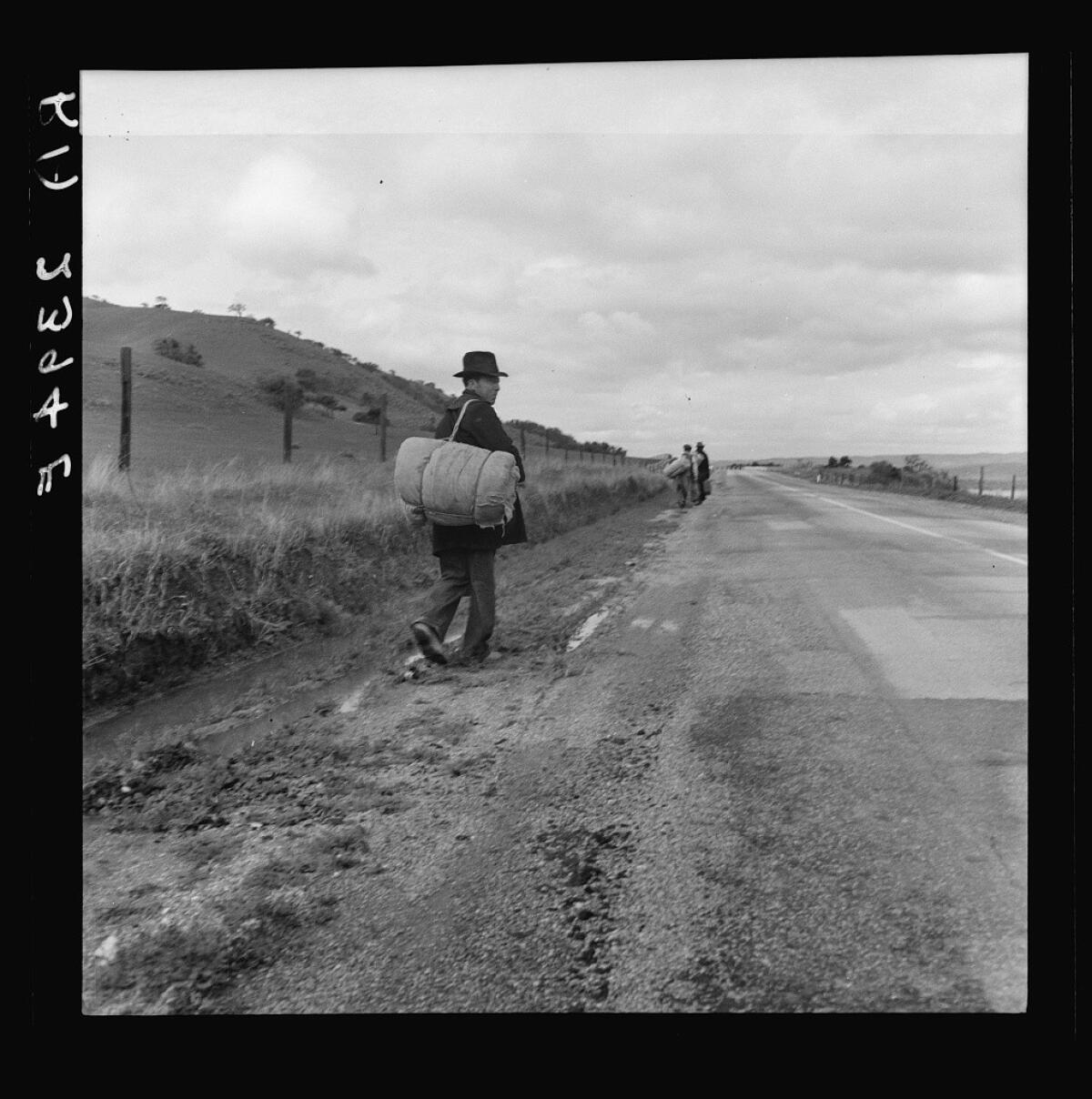
Transients rousted by police leave Los Angles during the Great Depression.
The earliest California newspaper digitalized is the Los Angeles Daily Herald of Oct. 2, 1873, which offered little in the way of news but much in the way of advice, including advising men to let their wives know how much money they earn so the wife won’t overspend. The next day was a little better, with a reprinted lecture about irrigation and how best to harness the Santa Ana River to supply the city of Riverside, proving that some issues have been with us for a long time.

Marian Anderson christens the Booker T. Washington, the first Liberty Ship named for an African American, at California Shipbuilding Corp.’s Wilmington yard Sept. 29, 1942.
Small moments, those, but such minutiae make up most people’s lives. And it’s fascinating to trace the arc back decades, distilling context for how we live today.
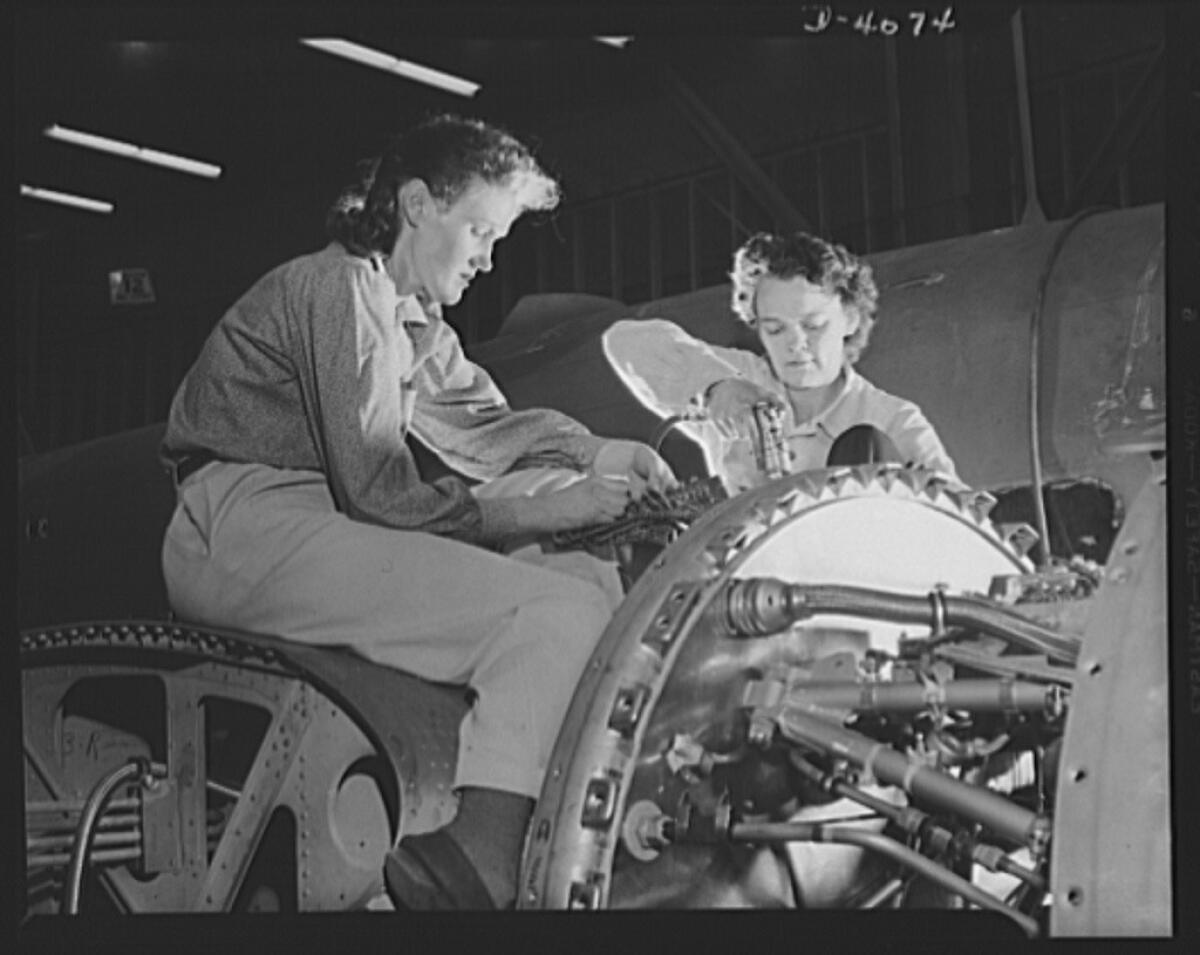
Women workers in 1942 in a Burbank factory that made bombers.
But such archives also raise questions for the future. Will blog posts like this be archived somewhere accessible to the curious 100 years hence? With communications now primarily by email and instant messages, how will historians track the give and take between people living today? As someone who writes about history, diving into old city directories can help provide the fine details that make a strong narrative work. But current directories tend to be online, which will make it difficult for future historians to find out who someone’s neighbors were in a given year. And with Facebook standing as the modern version of a personal diary, are we leaving much material for future sifters seeking to understand these times within their context?

Actress Ann Sheridan demonstrates cotton stockings as part of a campaign to push the fabric after silk and nylon were taken for the war effort.
It’s interesting, ultimately, that the very technology that lets us touch the past so easily also propels the ephemeral nature of our modern interactions, which are looking more like letters in the sand than an enduring record for the future.
Follow Scott Martelle on Twitter @smartelle.
More to Read
A cure for the common opinion
Get thought-provoking perspectives with our weekly newsletter.
You may occasionally receive promotional content from the Los Angeles Times.



